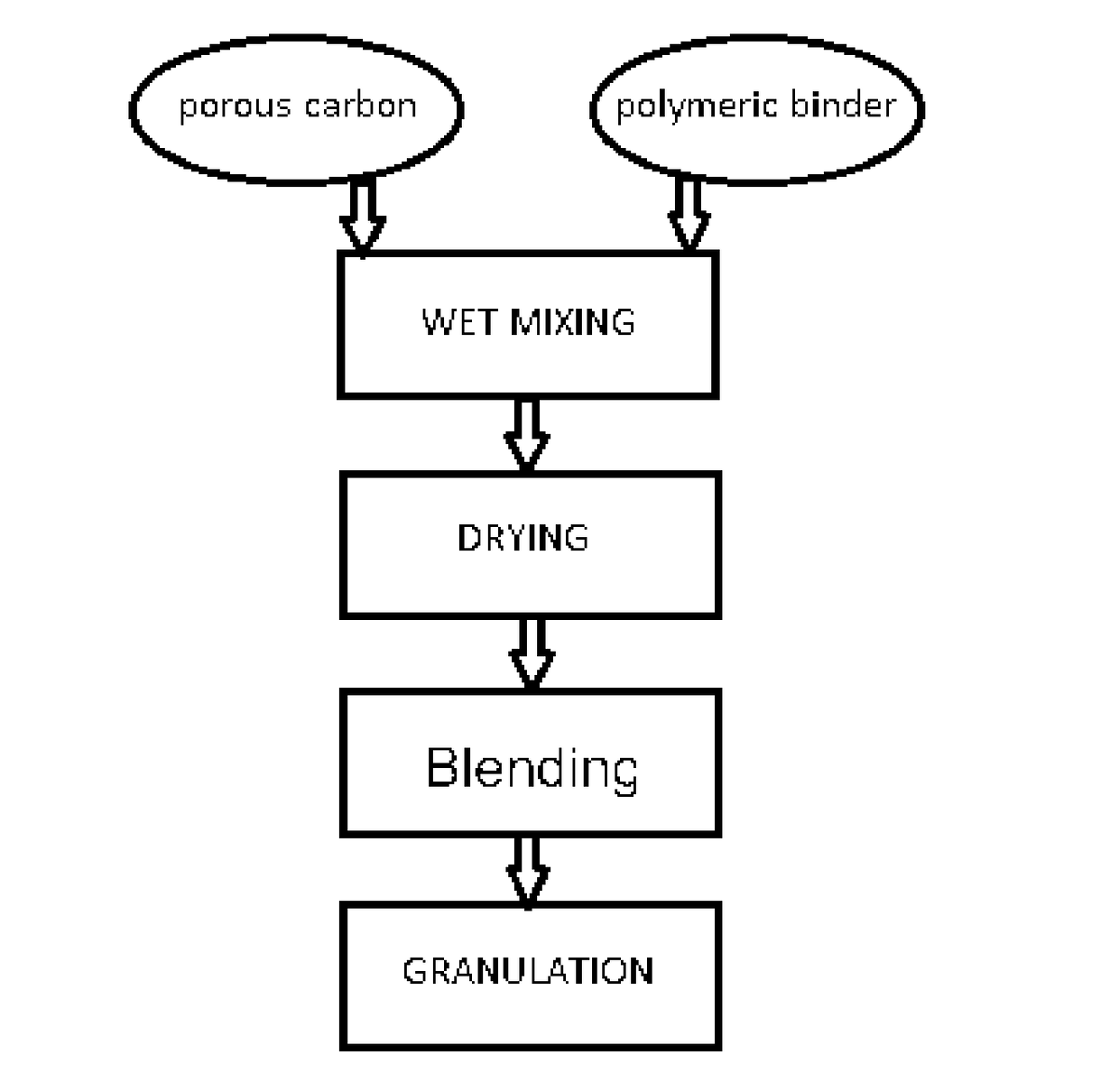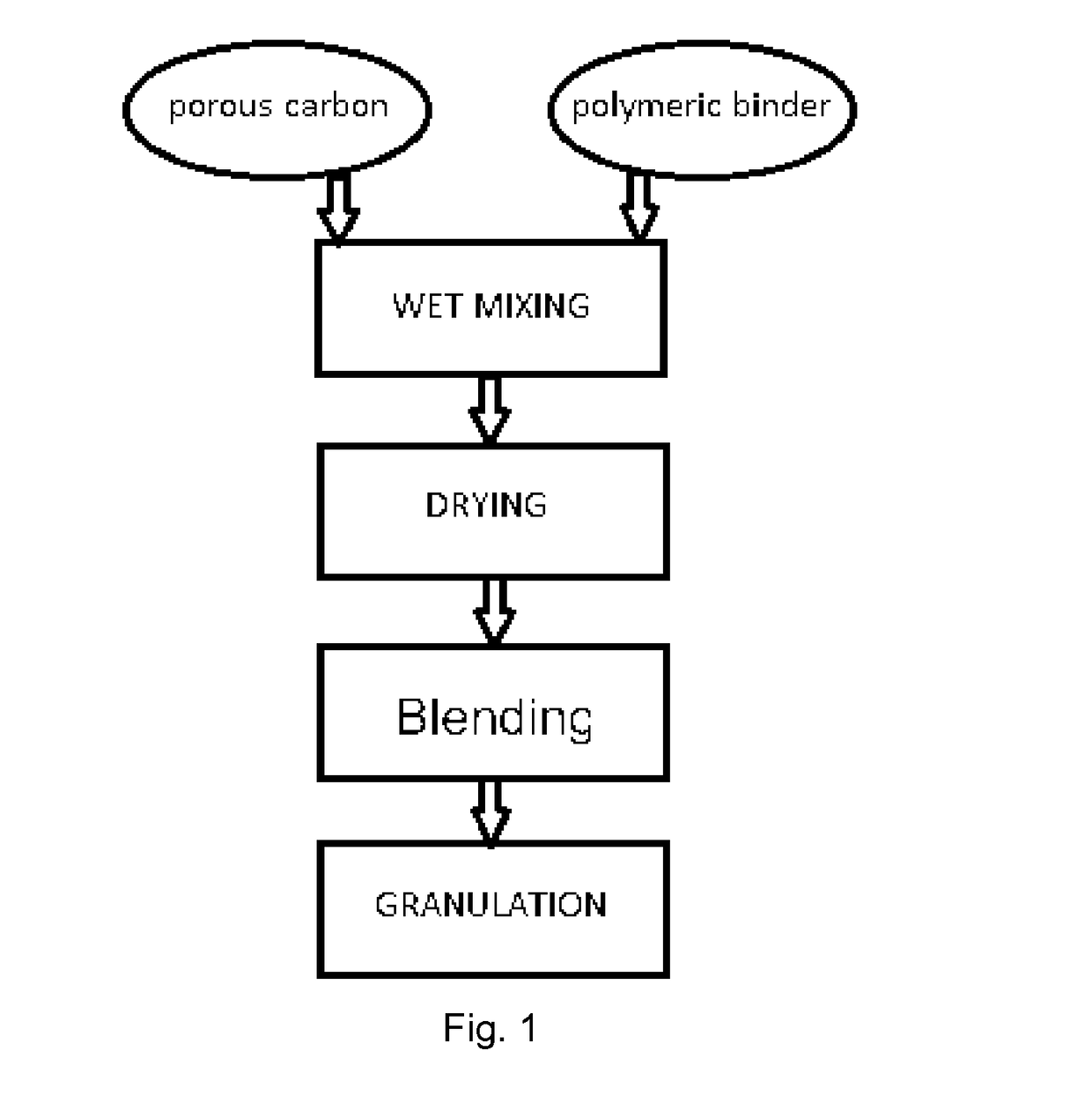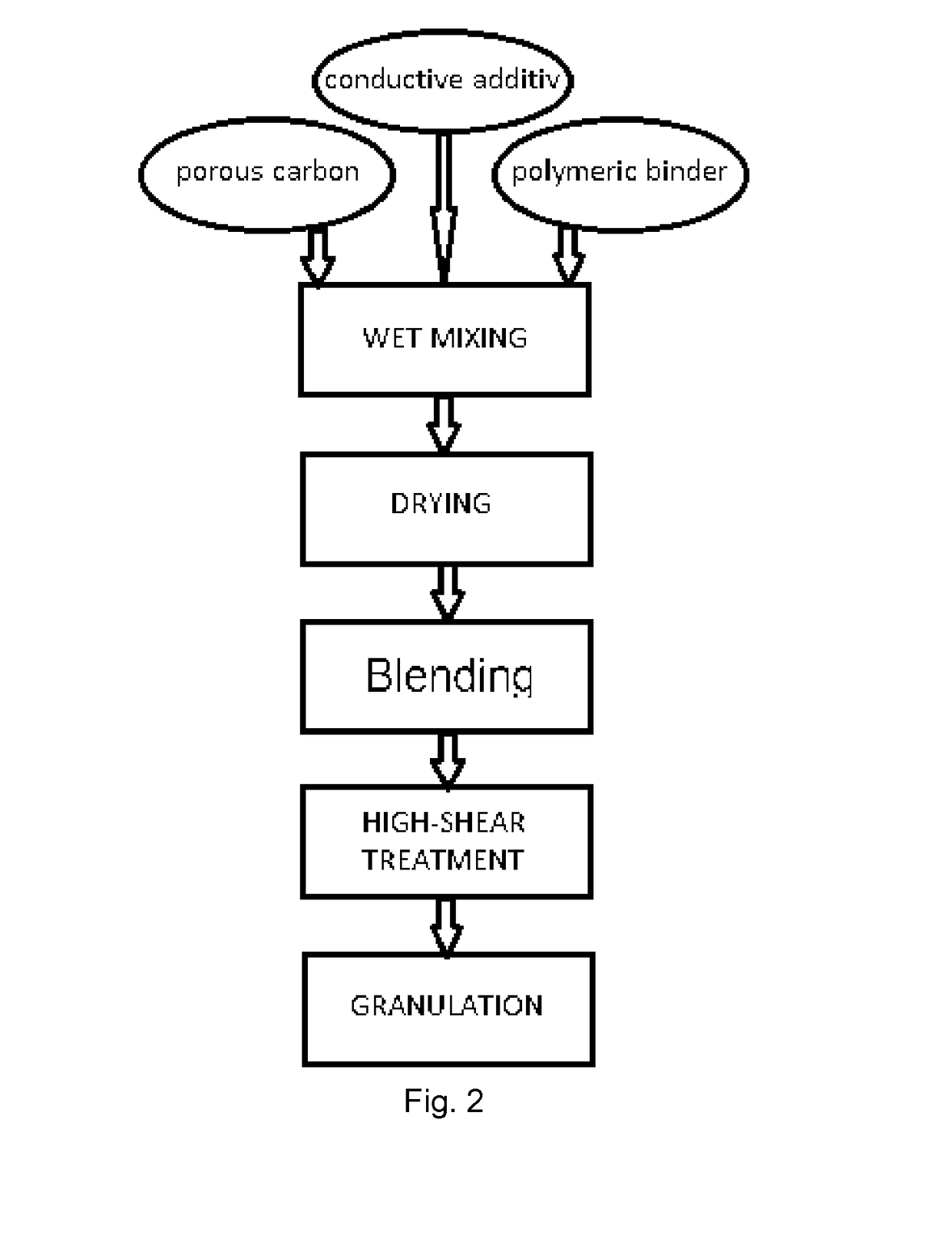A method for making a high-density carbon material for high-density carbon electrodes
- Summary
- Abstract
- Description
- Claims
- Application Information
AI Technical Summary
Benefits of technology
Problems solved by technology
Method used
Image
Examples
example 1
[0045]The quantity of aqueous solution free of organic solvents is added to the carbon powder, such that the carbon and an aqueous solution form creamy carbon slurry. The exact amount of the aqueous solution depends on the porosity of carbon powder, but usually is 3 to 1 by weight relative to carbon. In one example, the aqueous solution free of organic solvents may be water (distilled water). In another example, this aqueous solution may comprise an ionic compound used as a component of electrolyte. Yet in the other example the aqueous solution may comprise a various water-soluble compounds used to modify the chemical-physical properties of high-surface carbon electrode.
[0046]After that a desired amount of the polymeric fluoroalkyl compound is dispersed in the creamy carbon slurry to form homogeneous slurry of carbon-polymer composite. In one example the fluoroalkyl compound may be polytetrafluoroethylene (PTFE). Yet in another example it may be any completely or partially fluorinat...
example 2
[0050]Polarisable carbon electrodes were prepared as follows. The pre-compacted mixture of 87% (wt.) microporous carbon (YP-50F, Kuraray), 3% (wt.) carbon black (Super C60, Timcal) and 10% (wt.) polytetrafluoroethylene (PTFE, Aldrich, 60% suspension in water) was prepared according to the method of example 1 and rolled stepwise into the carbon film with a final thickness of 60 μm. The density of 0.74 g / cm3 was reached.
example 3
High Shear Compounding Process.
[0051]An amount of carbon electrode material prepared according to the method of example 1 was inserted into the high shear compounder. The compounder was equipped with a torque measuring device. The electrode material mixture was mixed until the mixing torque achieved desired or maximum value (depending on the type of high-shear compounder).
[0052]In the next step the resulting material, dense rubber like substance, underwent the non-destructive granulation / milling process to the size of 10-1000 mkm, depending on final electrode thickness required. Each individual granule retains the pre-compacted material density—hence less force is required for calendering process.
[0053]Examples collected in Table 2 present the major characteristics of carbon electrodes achieved according to this invention from the pre-compacted carbon / binder composite granules preliminary treated in high-shear compounder.
[0054]Table 1. Characteristics of the electrodes made with var...
PUM
 Login to View More
Login to View More Abstract
Description
Claims
Application Information
 Login to View More
Login to View More - R&D
- Intellectual Property
- Life Sciences
- Materials
- Tech Scout
- Unparalleled Data Quality
- Higher Quality Content
- 60% Fewer Hallucinations
Browse by: Latest US Patents, China's latest patents, Technical Efficacy Thesaurus, Application Domain, Technology Topic, Popular Technical Reports.
© 2025 PatSnap. All rights reserved.Legal|Privacy policy|Modern Slavery Act Transparency Statement|Sitemap|About US| Contact US: help@patsnap.com



